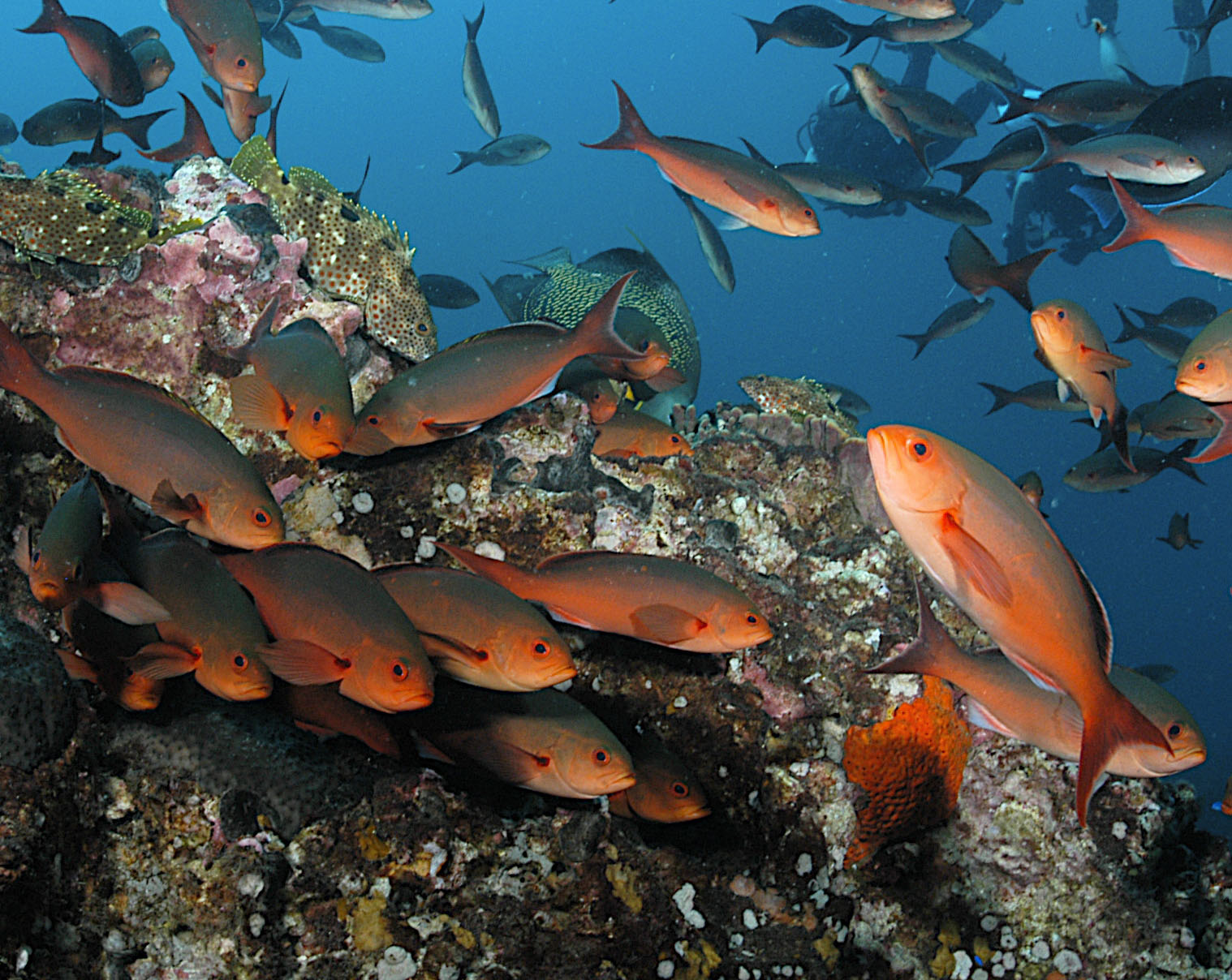We are investigating habitat requirements and connectivity for key reef-associated fishes in the Flower Garden Banks National Marine Sanctuary and surrounding areas. Marine protected areas (MPAs) are designated to conserve essential habitats and vulnerable taxa. Understanding how fish populations use these habitats and how the MPA benefits areas outside its boundaries will help managers develop MPAs that are effective and benefit present and future generations.
Why We Care
The Gulf of Mexico is one of our nation’s most shared ocean spaces. Its outer continental shelf supplies approximately 20 percent of the total U.S. crude oil and natural gas production, and commercial fisheries landings average 1.4 billion pounds per year (from 2018 to 2020). The Gulf of Mexico’s coral reef ecosystems provide habitat, food, and shelter to hundreds of species, and play an economic role in supporting commercial fisheries and recreational industries.
The anthropogenic and natural pressures placed on the Gulf of Mexico’s ecosystems can have lasting impacts on their condition, as evidenced by the annual hypoxic zone off the coast of Louisiana and the Deepwater Horizon oil spill. The establishment of MPAs to protect and conserve Gulf of Mexico ecosystems has been identified as one of the key restoration strategies for benthic communities affected by the Deepwater Horizon oil spill. Understanding how fish populations use the Flower Garden Banks National Marine Sanctuary to improve MPA design and management is the focus of our work.
 The Atlantic creole-fish (Paranthias furcifer/Serranidae) is one of the focal species for this project. Credit: G.P. Schmahl, NOAA. |
 A parrot fish (Scaridae) with an acoustic transmitter attached, used to track how the fish uses the reefs and banks of the Flower Garden Banks National Marine Sanctuary. Credit: J.R. Rooker, TAMU. |
What We Are Doing
We are studying a wide range of key reef-associated fishes to determine how they use the banks and reefs of the Flower Garden Banks National Marine Sanctuary and surrounding areas. Fish taxa include:
- native (snapper-grouper complex, greater amberjack) and invasive (lionfish) mesopredators,
- foundational reef fishes (bicolor damselfish, stoplight parrotfish, Atlantic creolefish), and
- demersal/pelagic fishes that form aggregations (cubera snapper, marbled grouper, scamp, scalloped hammerhead sharks, wahoo).
Using acoustic and satellite telemetry (to track fish movements), bioacoustics (to capture fish vocalizations), and biophysical modeling (to determine fish larval dispersal, we will evaluate habitat use and ecological connectivity of these reef species at different scales (i.e., within and between banks/reefs for target species from larval to adult stages).
To ensure that our project and its outputs are useful to managers, we will work closely with resource managers to translate our results. The study will provide information on how habitats are used by target fish species and their dispersal/movement across the network of banks and reefs within and outside the Flower Garden Banks National Marine Sanctuary. Currently, this information is unknown for targeted fishes, compromising the ability of resource managers to implement measures to effectively protect vulnerable habitats and species that depend on these banks for their survival.
This work is part of the Regional Ecosystem Research Program’s Federal Funding Opportunity focused on understanding species’ habitat usage and connectivity. Funded by NCCOS and conducted in collaboration with the Office of National Marine Sanctuaries and the National Marine Protected Areas Center, the project is led by Jay Rooker (Texas A&M University) and represents a collaboration of 13 scientists at five different universities and two federal entities (NOAA’s Flower Garden Banks National Marine Sanctuary and the Southeast Fisheries Science Center).
 Official websites use .gov
A .gov website belongs to an official government organization in the United States.
Official websites use .gov
A .gov website belongs to an official government organization in the United States. Secure .gov websites use HTTPS
A lock or https:// means you’ve safely connected to the .gov website. Share sensitive information only on official, secure websites.
Secure .gov websites use HTTPS
A lock or https:// means you’ve safely connected to the .gov website. Share sensitive information only on official, secure websites.